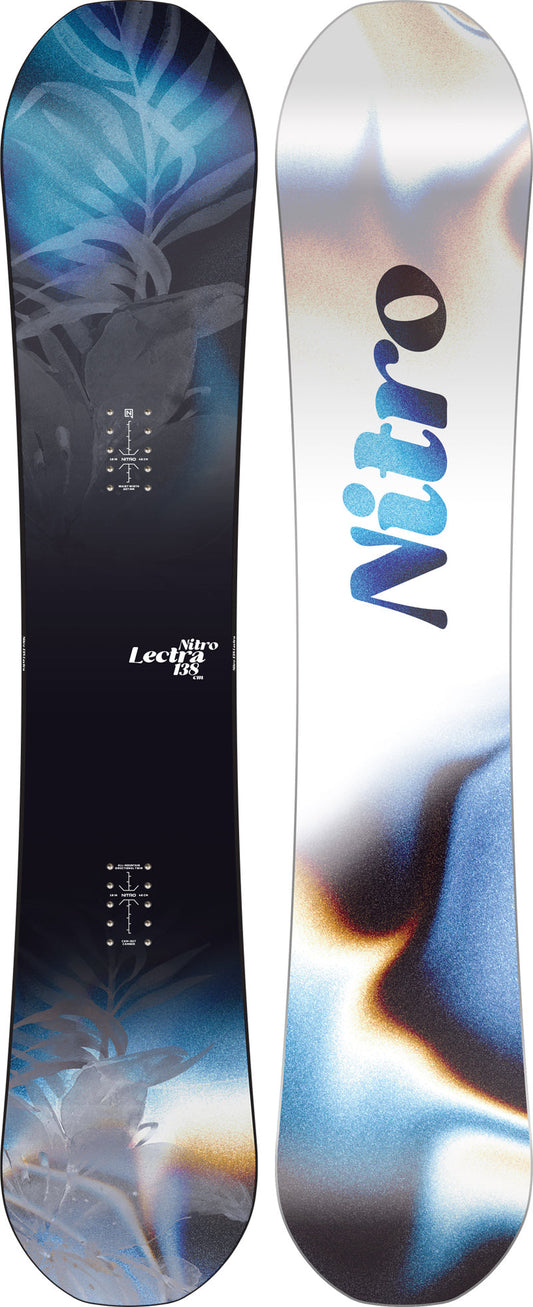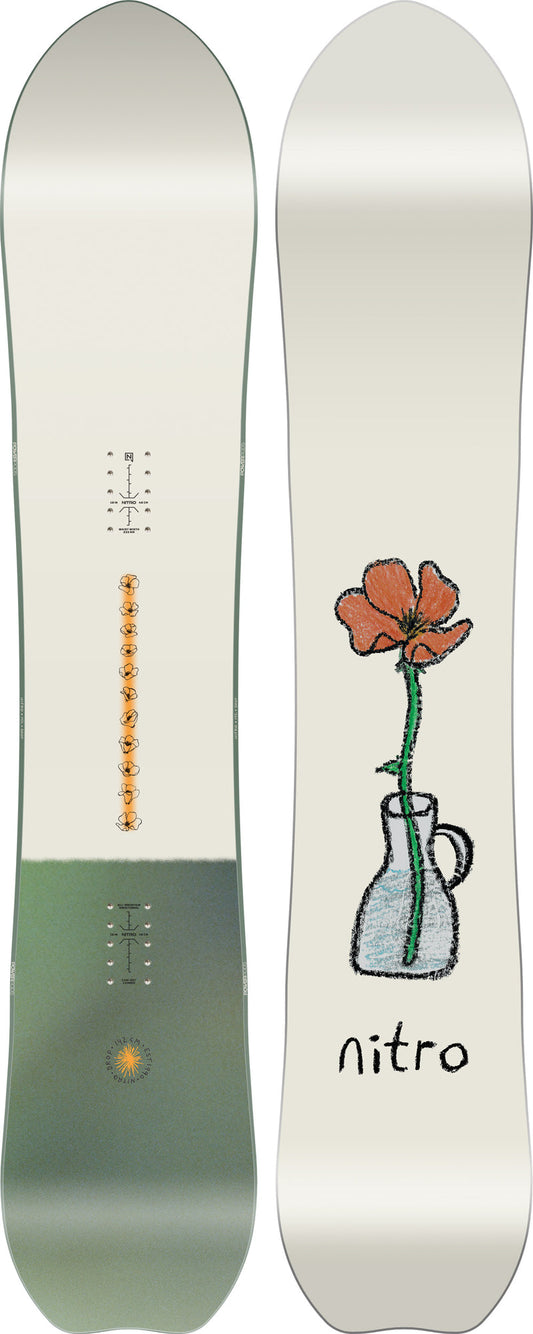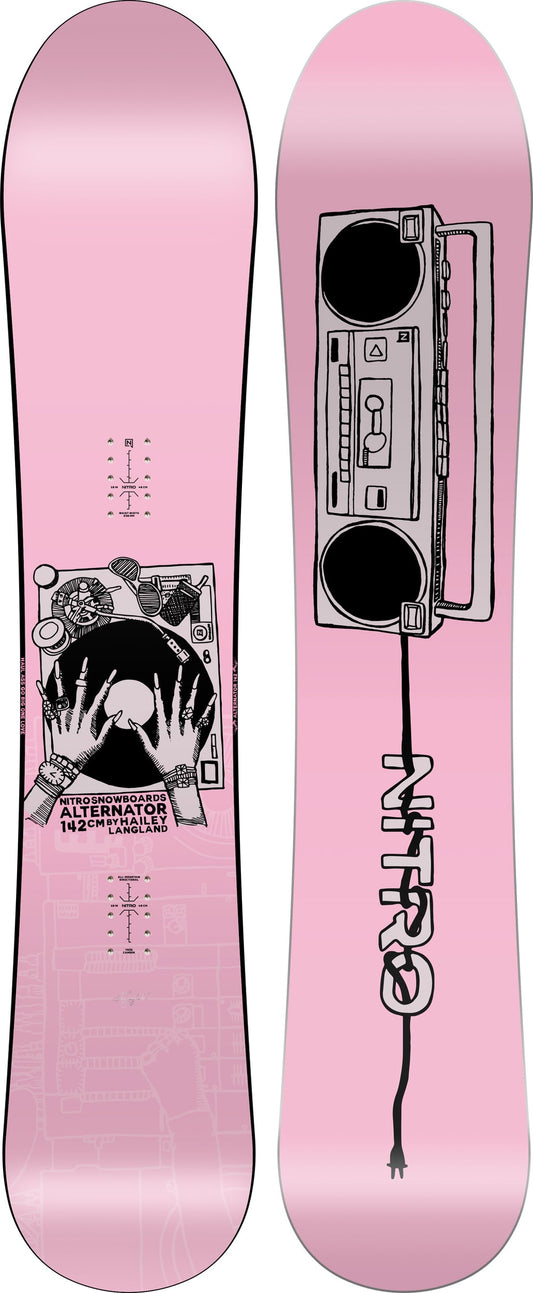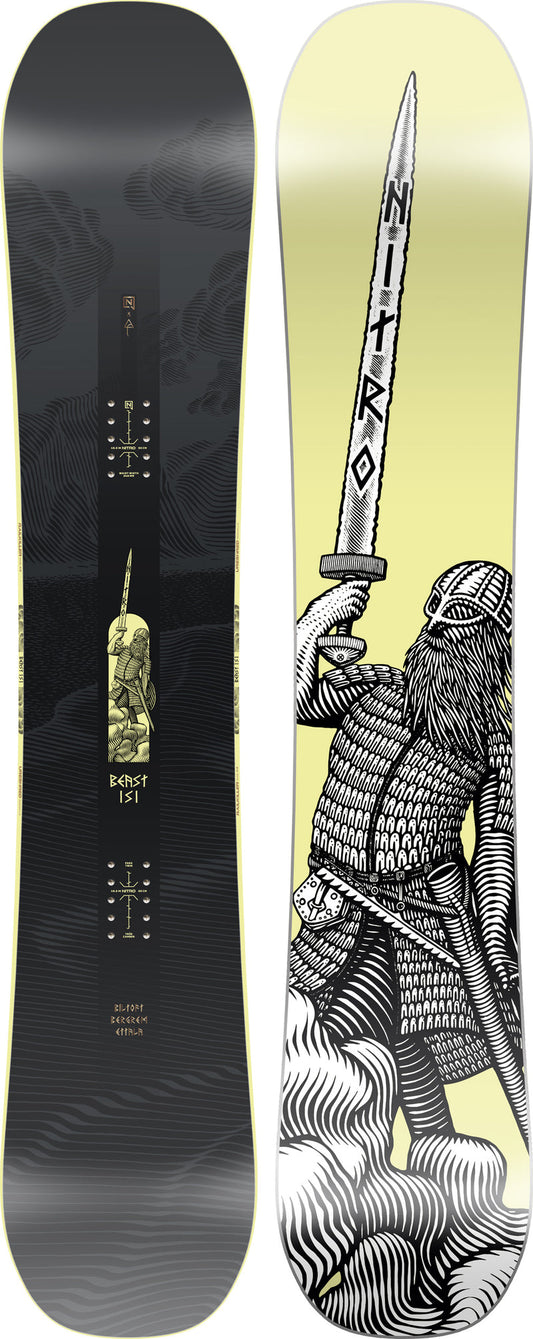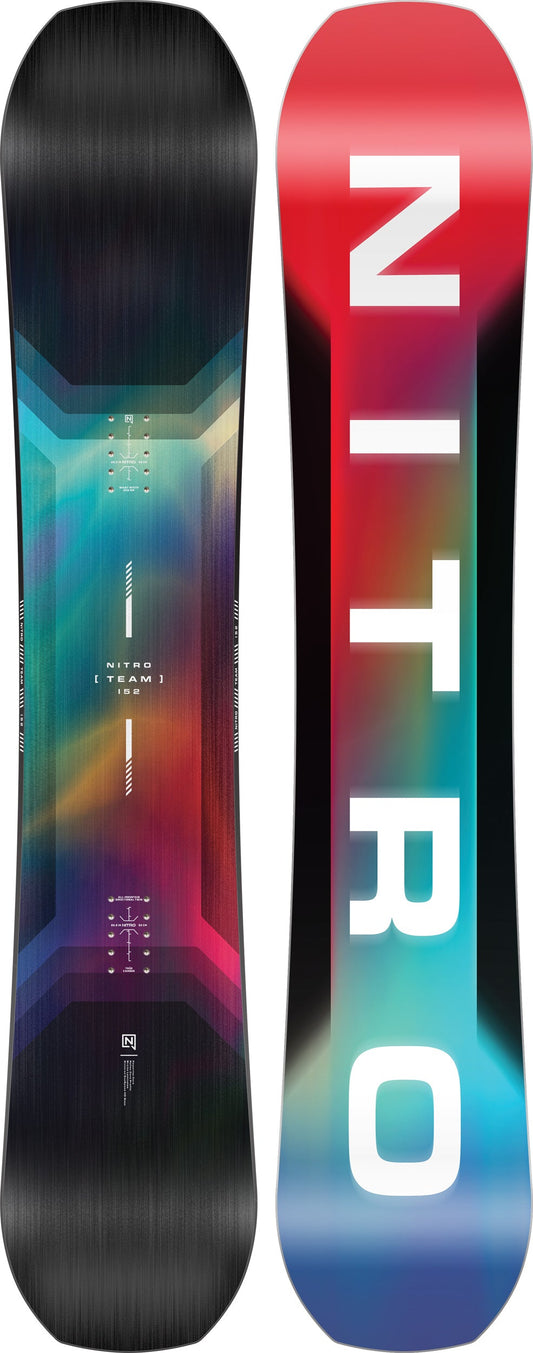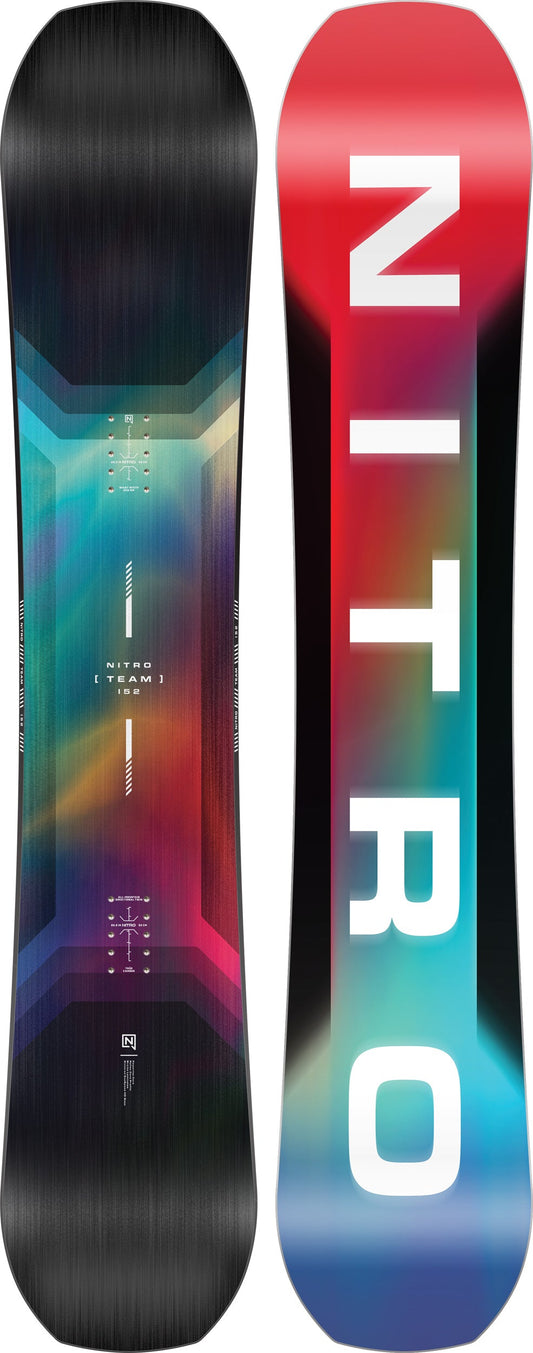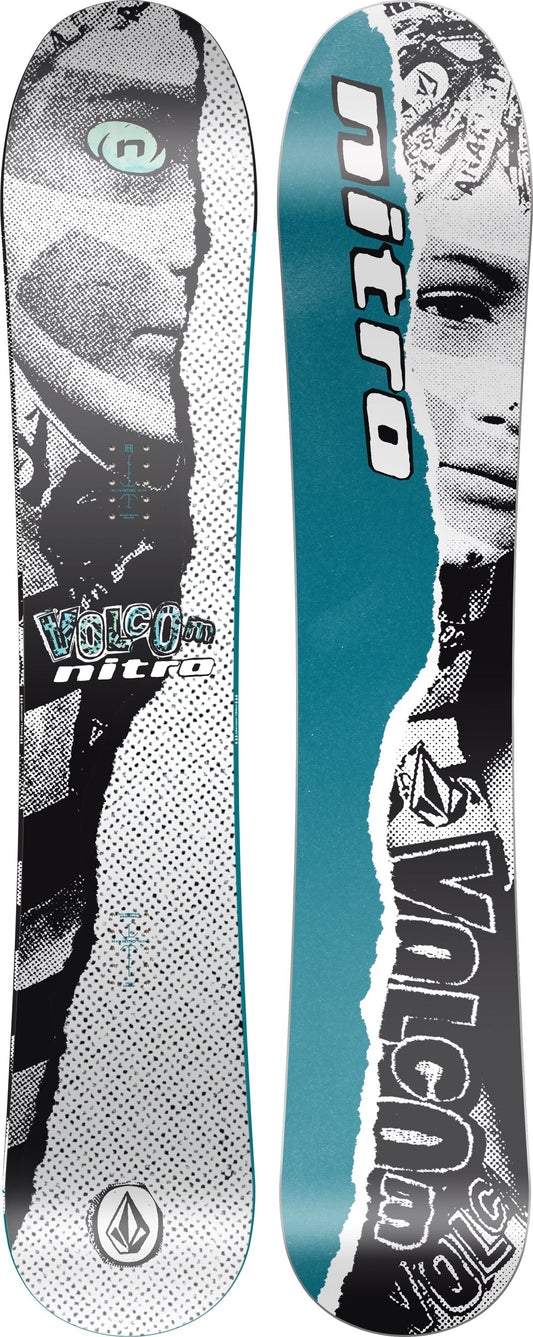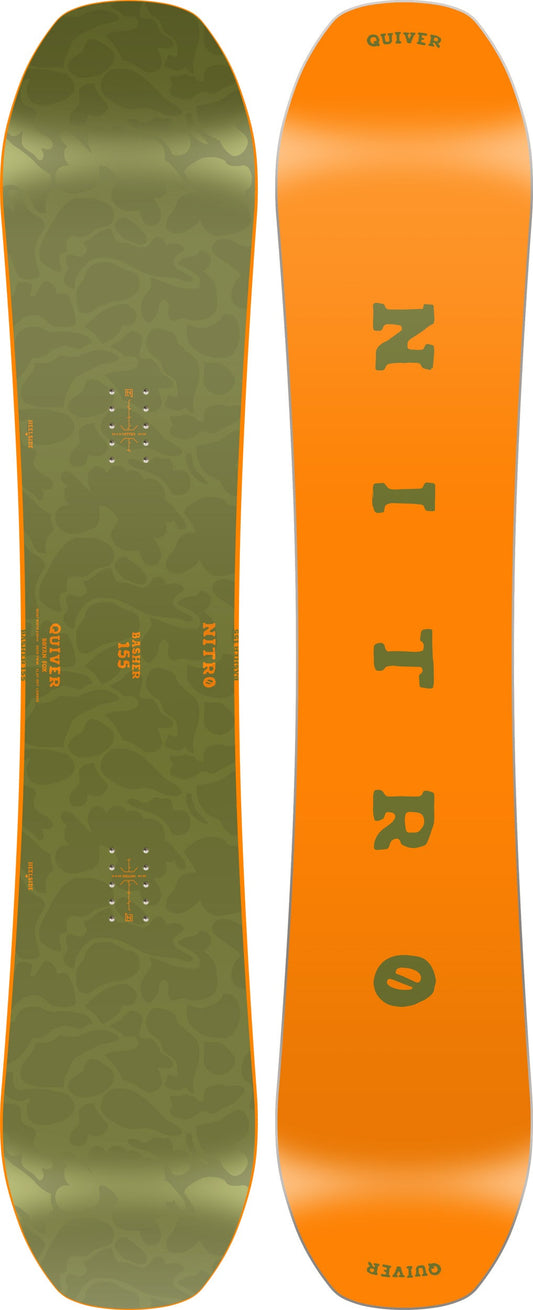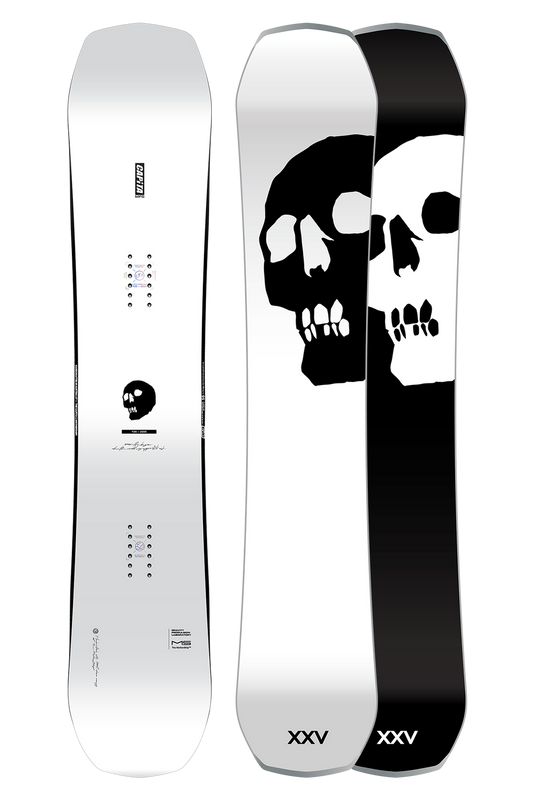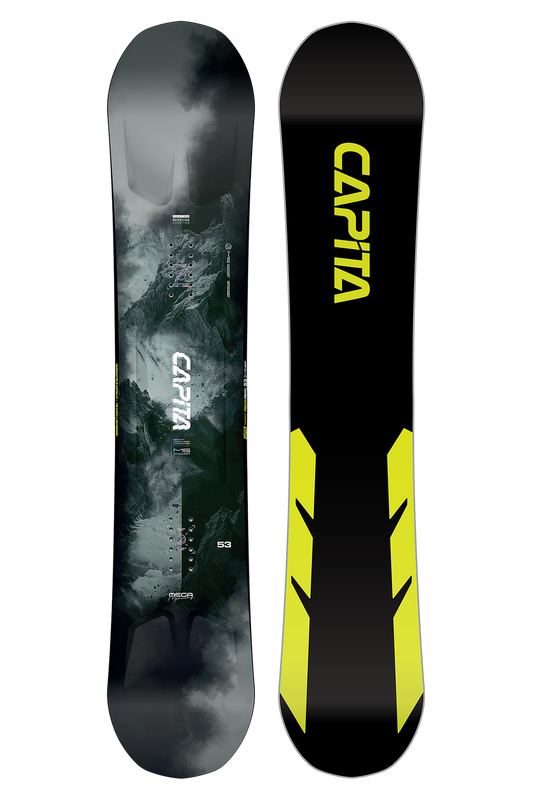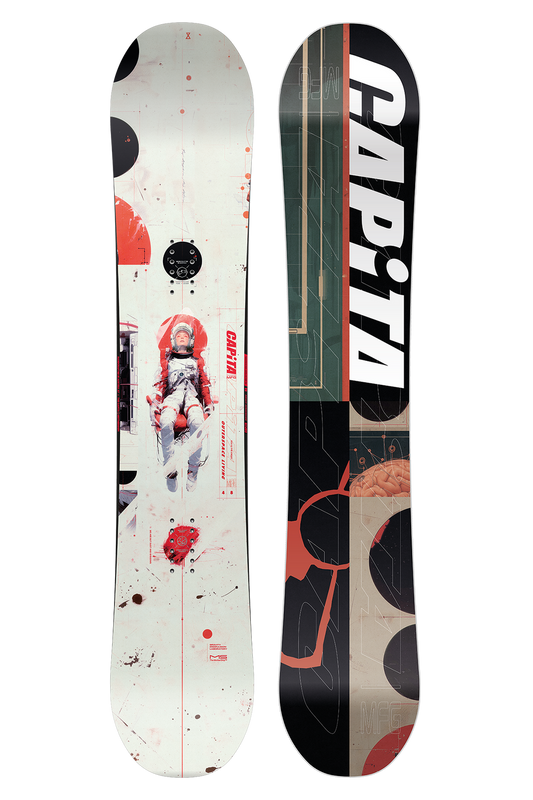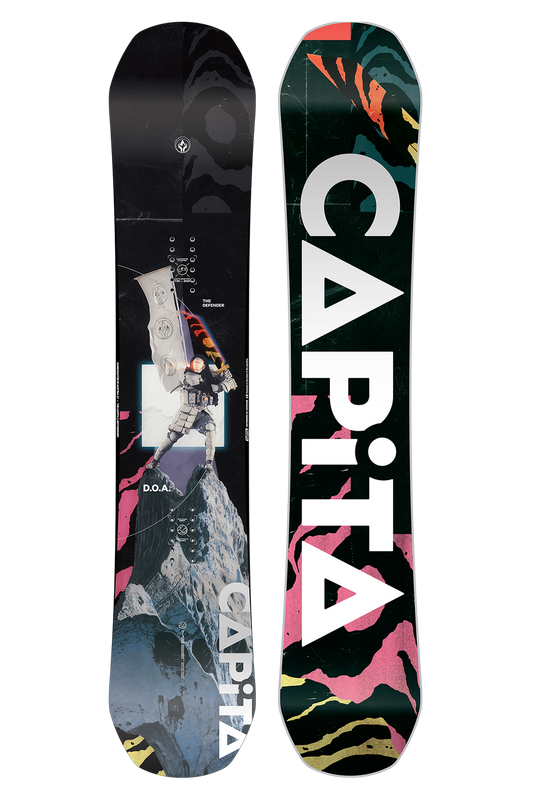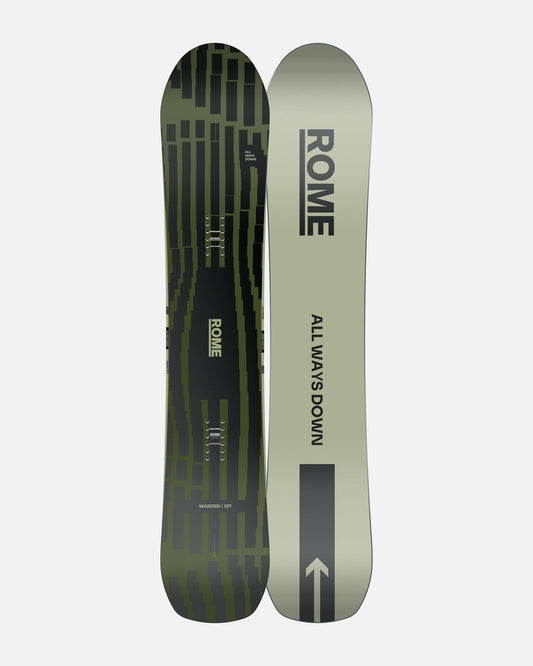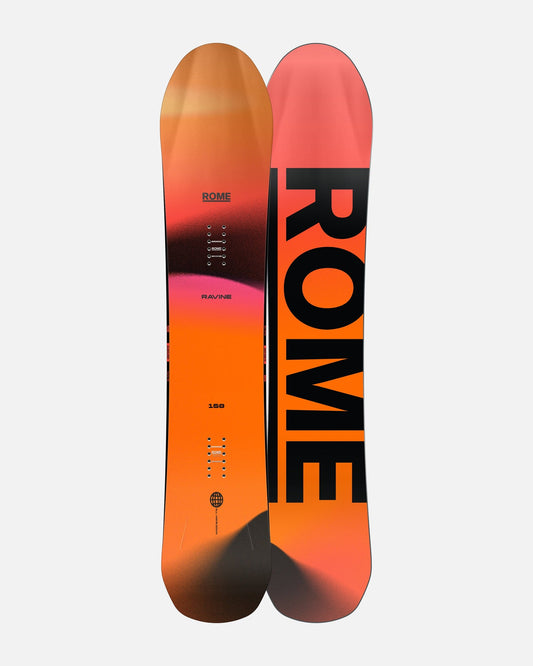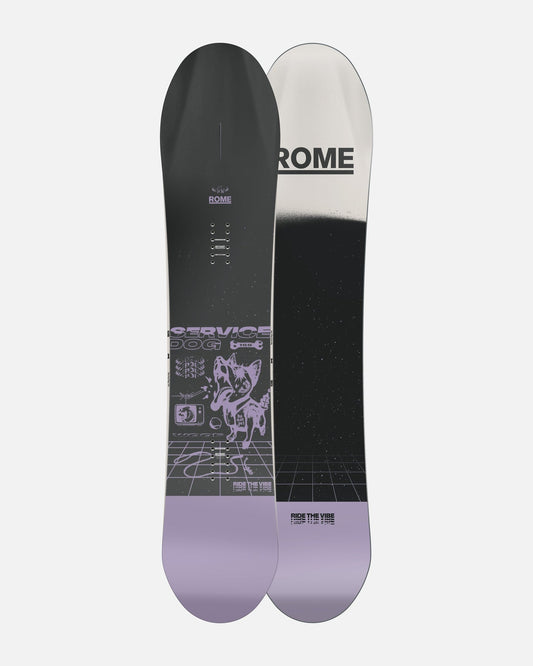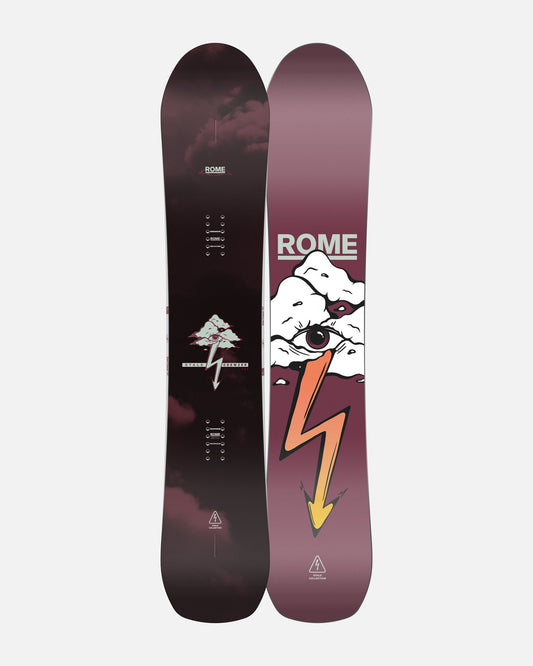Buying a Snowboard: How to Find the Right Board for Your Style
Buying a snowboard seems simple—until you realize how many different boards exist. From freestyle twins to directional freeride machines, with stiff flex or as soft as a gymnast… You don’t want a bad purchase; you want a board that matches your riding style, level, and preferences. Below we explain what to look for—so you step off the lift with the right board.
Soft, Medium or Stiff: Which Flex Fits Your Level and Style?
Flex determines how your snowboard feels under your feet.
A soft-flex board is forgiving, playful, and easy to steer. Ideal for beginners or riders who love the snowpark for rails and butter tricks.
Going all-in on speed, edge hold, and carving on groomers? Then you’ll want a stiffer board. It delivers more stability and pop, especially at higher speeds or on icy sections.
Not sure? A medium-flex snowboard is often the best choice—especially for all-mountain riders who want to do a bit of everything, from groomers to powder.
Pro tip: your flex should match your strength, ability level, and the terrain you ride most.
Choose the Right Board for Your Terrain
Not every board is built for everything.
Pause and consider where you like to ride most:
Groomers: look for a board with solid edge hold and stability, preferably with a camber or hybrid profile.
Snowpark: choose a freestyle snowboard with a twin shape, softer flex, and enough pop for jumps and tricks.
Off-piste / powder: this is where a freeride snowboard shines with a directional shape, extra float in the nose, and a slightly stiffer flex.
All-mountain freeride: ideal if you want a bit of everything. These boards are often directional or directional twin with a great balance of agility and control.
Knowing which type of snowboard fits your terrain choice is essential—so you get the most fun out of every run.
Profiles Explained: Camber, Rocker, Reverse Camber, Flat & Hybrids
A snowboard’s profile—how the board looks from the side—determines how it rides.
Camber: the traditional arch. Lots of edge hold, pop, and precision in turns. Ideal for groomers and carving.
Rocker / reverse camber: lifted tip and tail. More playful, easier to pivot, better float in powder. Popular with beginners and freestylers.
Flat: flat between the bindings. A balanced mix of stability and playfulness.
Hybrid: a combo of camber and rocker. For example, camber between the bindings with rocker at nose and tail—delivers a stable ride with a playful feel.
➡️ Every profile has its own vibe. Choose what fits how you ride—not just what looks cool.
Which Type of Snowboard Suits You?
Choosing a board doesn’t start with the graphic—it starts with your riding style. Do you want to do a bit of everything? Or do you live for powder, park, or perfect groomers?
Your rider type determines which board you need. Here’s the breakdown so you can buy the right snowboard that truly fits you.
All-Mountain Snowboards: Versatile On and Off the Piste
If you love exploring the whole mountain—from crisp groomers to a cheeky powder line next to the lift—an all-mountain snowboard is your best friend.
These boards are purpose-built to perform well on any terrain. They often feature a medium flex, directional or directional twin shapes, and profiles that balance grip and playfulness.
Perfect for riders who enjoy variety or don’t want to commit to just one style.
Freeride Snowboards: For Deep Snow and Off-Piste Lines
For the freeriders among us—those who dive into powder or draw their own lines off-piste—a freeride snowboard is the way to go.
These boards usually have a stiffer flex, a directional shape with a longer nose and shorter tail, and extra float to keep you effortlessly on top of deep snow.
They feel stable at speed and are built to keep going where the groomers end.
Looking for off-piste adventure? Start here.
Freestyle Snowboards: Tricks, Rails, Jumps & Park Vibes
Freestyle boards are built for creativity—think jumps, spins, butter tricks, and rails. They typically have a twin-tip shape, a soft to medium flex, and often a rocker or hybrid profile for added playfulness.
They ride just as well switch as regular, perfect for the park or side hits along the piste.
➡️ For freestylers who live for airtime, style, and creative riding.
Directional, Twin Tip or Directional Twin: What Does Shape Tell You?
Your board’s shape dictates how it rides:
Directional snowboard: longer up front (nose) than in the back (tail). More float in powder, more stability at speed.
Twin-tip snowboard: fully symmetrical. Perfect for freestyle and riding switch.
Directional twin: a mix of both—often symmetrical in flex, but optimized for riding forward. Popular with all-mountain and park riders.
The right shape depends on your preferences and where you spend most of your time on the mountain.
How Do You Identify Your Rider Type?
Think about where you ride most, your ability level, and your goals:
Beginner? Start with a softer all-mountain or freestyle board that forgives mistakes.
Park rat? Go for a twin-tip snowboard with soft to medium flex.
Freerider? You want stability, a stiffer deck, and a directional shape.
All-rounder? Medium flex, hybrid profile, and a shape that can do it all—that’s your jam.
Not sure which type of snowboard fits your style?
Drop by in Oudenaarde or Zottegem, or send us a message—we’ll help you choose what truly suits you. No fluff, just honest advice from real riders.
How Do You Know Which Snowboard Size You Need?
You can pick the perfect profile and shape, but if the size is off… you’ll feel it right away. A snowboard that’s too short feels unstable. Too long? Turns feel heavy and sluggish.
Choosing the right size is key for control, fun, and progression.
Choosing Length by Your Height, Weight & Shoe Size
The basic rule? Your body weight and height determine the right board length.
Lighter than average? A slightly shorter board will suit you.
Heavier or stronger build? Go a bit longer for more stability and pop.
Your height gives a rough guideline, but weight plays a bigger role in how the board behaves.
Your shoe size matters too: big feet on a narrow board = overhang & less edge hold. Small feet on a board that’s too wide = slower edge-to-edge.
That’s why we always combine height, weight, and shoe size to determine your ideal board length.
Wide Boards for Big Feet: Yes or No?
Do you wear EU 44 or larger in boots? Then you’ll likely need to look at wide snowboards. They have a wider waist width so your feet don’t overhang when carving.
For riders with larger feet, this means:
Less chance of toe drag when carving
More stability on landings
No weird rotations on jumps or off-piste
But note: if your feet are only just big enough for a standard board, a wide can work against you with slower edge transitions.
Unsure? Ask for advice. We’ll check whether your foot matches the board—or the other way around.
How Do Stance & Bindings Affect Your Choice?
Your stance width and binding position can also influence your board length and type.
Ride a wide stance (like many freestylers)? A slightly longer board often feels more stable.
Stand narrow or ride switch a lot? A shorter length or twin shape can feel more nimble.
Binding type matters too: some bindings sit higher, changing your center of gravity—relevant for carving or jumping.
At One80 we always look at the full picture: shoe size, stance, riding style, and level—so you choose the right snowboard that truly works for you.
How Much Does a Good Snowboard Cost?
You might wonder: what does a good snowboard actually cost? Fair question. There’s a big difference between a €300 entry-level board and a high-end deck above €600.
But is more expensive always better? Not necessarily. It all depends on your level, your style, and what you expect from your board.
What Do You Get in Each Price Range?
€250–€400 → Great for beginners or occasional riders. Think softer, more forgiving boards with simpler materials. Perfect if you mostly stay on groomers and want to learn the basics.
€400–€600 → The sweet spot for intermediate riders or keen all-mountain shredders. More tech, better pop, stronger wood cores, and often more versatile profiles.
€600–€800+ → High-performance snowboards for riders who know exactly what they want. Expect carbon reinforcements, faster bases, responsive flex, and targeted designs for freeride, freestyle, or carving.
You don’t need to spend a fortune to buy a good snowboard, but it’s true: paying more = better materials, more durability, and often more riding pleasure.
Durability, Materials & Finish: What Makes a Board “Good”?
You don’t judge a great snowboard by its graphic, but by what’s inside:
High-quality wood cores (poplar, aspen, bamboo…)
Reinforcements with fiberglass, carbon, or basalt for extra response
Sintered bases instead of extruded—faster and more wear-resistant
Hybrid or advanced profiles that help you turn, pop, and float in powder
Finishing quality also matters: construction, beveling, laminates, and edge tune.
Brands like Burton, Capita, Jones, Bataleon, Nitro… invest heavily in quality. Their boards last longer—and you feel it in every run.
When Is It Smart to Invest in a Higher-End Board?
Are you a beginner who rides a few days a year? Then an entry-level model is usually fine.
Ride more often, have some experience, or really want to progress? Then it’s smart to invest in a board you can grow into.
You’ll feel the difference immediately: more control, more pop, easier turning, and better grip for carving or off-piste.
And honestly? If you ride 10 days a year, you deserve a board that truly fits you. That’s real durability and extra joy on the mountain.
Why Buy Your Snowboard at One80 Boardshop
You don’t buy a snowboard on a whim. You choose a deck that fits your feet, your riding style, and what you want from the mountain. That’s exactly why One80 is the right place.
We’re not a chain. Not a marketing machine. Just a real boardshop run by riders.
Help from Real Riders—No Sales Fluff, Just Personal Advice
At One80 you get honest advice from people who actually ride—not slick sales talk.
We listen to what you’re looking for, where you ride, your level, and your budget.
Then we find the right board with the right flex, shape, and profile—for your feet, your style, and your future on the mountain.
Drop by in Oudenaarde or Zottegem. We’ll take the time to try, feel, compare, and explain together.
Test Options, Maintenance & Service in Oudenaarde
Hesitating between two boards? With us you can sometimes test before you buy—or at least thoroughly feel, flex, and compare in-store.
And our service doesn’t stop after purchase:
We offer tuning and repairs, from edge sharpening to base repairs
We’ll mount bindings, dial in your stance, and advise on boot fit
And yes, we’ll remember your setup so you don’t start from scratch next time
We want your snowboard to do what it’s supposed to: ride, smile, and enjoy.
Order Online—with Advice Tailored to Your Feet, Style & Level
No time to visit? We’ll help you online with just as much care.
Send us your shoe size, height, weight, level, and preferences
We’ll suggest a few boards that truly fit you
You’ll get honest advice on size, shape, flex, boots, and bindings
Placing an order? You’ll get a board that makes sense—not guesswork.
Doesn’t feel quite right? We’ll find a solution together. That’s our service—online too.
Frequently Asked Questions About Buying a Snowboard
What should I look for when buying a snowboard?
Consider your level, style, body type, and where you ride most (groomers, park, powder).
Key factors: shape, profile, flex, length, and fit with your boots and bindings.
What’s the difference between all-mountain, freeride, and freestyle boards?
All-mountain: all-round boards for groomers, park, and powder.
Freeride: focused on speed, off-piste, and deep snow.
Freestyle: playful, flexible, ideal for tricks, jumps, and rails.
How do I choose the right flex?
Soft flex = forgiving; good for beginners and park.
Medium flex = balance of playful and stable—ideal for all-mountain.
Stiff flex = lots of control at speed; perfect for freeride and carving.
Which board shape suits me—directional or twin?
Directional = better for riding forward; stable in powder.
Twin = symmetrical; ideal for switch and freestyle.
Directional twin = a mix of both; perfect for all-mountain riders.
How do I know what size I need?
Choose based on your height, weight, and shoe size.
Bigger feet? You may need a wide board. Not sure? We’re happy to help.
What does a good snowboard cost on average?
Between €350 and €600 you’re in a great spot for quality.
More expensive boards offer better materials, finishing, and durability—but for beginners, a simpler model often does the job too.
Are expensive boards really that much better?
Not always. They often provide more tech and longer lifespan, but more important is that the board fits your style and level.
Can I buy a snowboard online without trying it first?
Yes. Share your height, weight, shoe size, and riding style and we’ll help you pick the right board. Not perfect? We’ll sort it out together.
Which brands are recommended for beginners?
Nitro, Burton, Bataleon, and Ride offer forgiving models that are ideal for beginners: comfortable, stable, and durable.
What else do I need besides a board?
At minimum:
Snowboard boots (matched to your bindings & board)
Bindings tuned to your style and stance
Optional: maintenance tools, stomp pad, or leash


